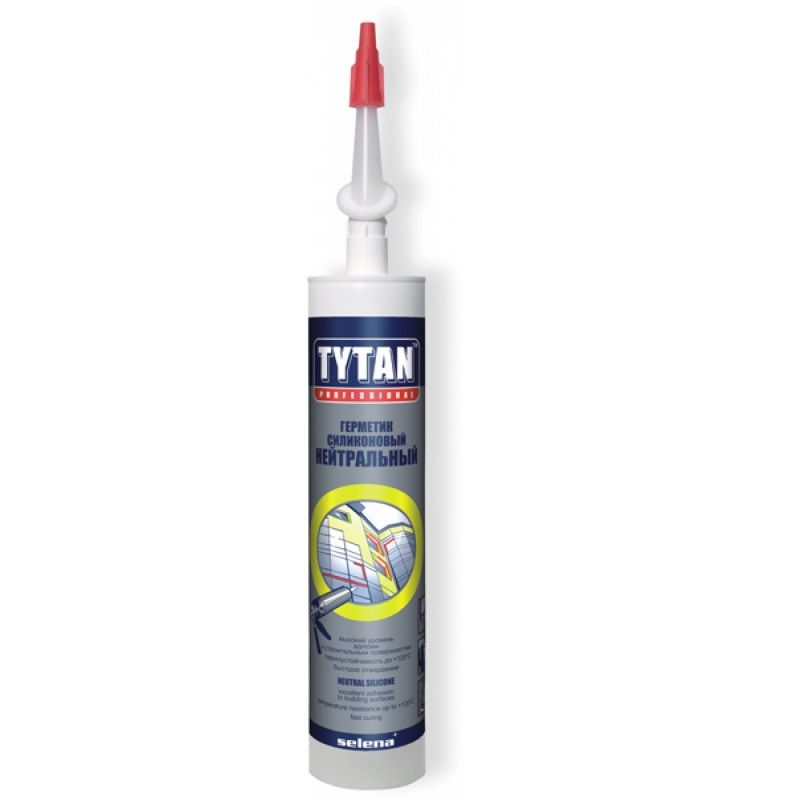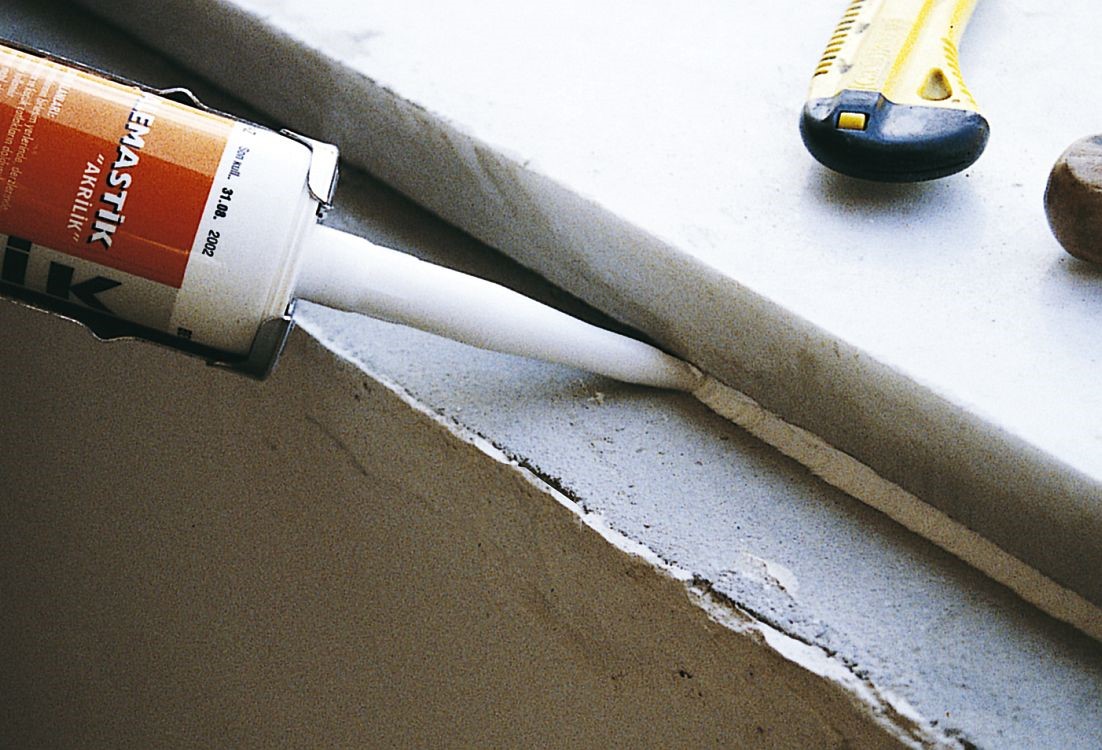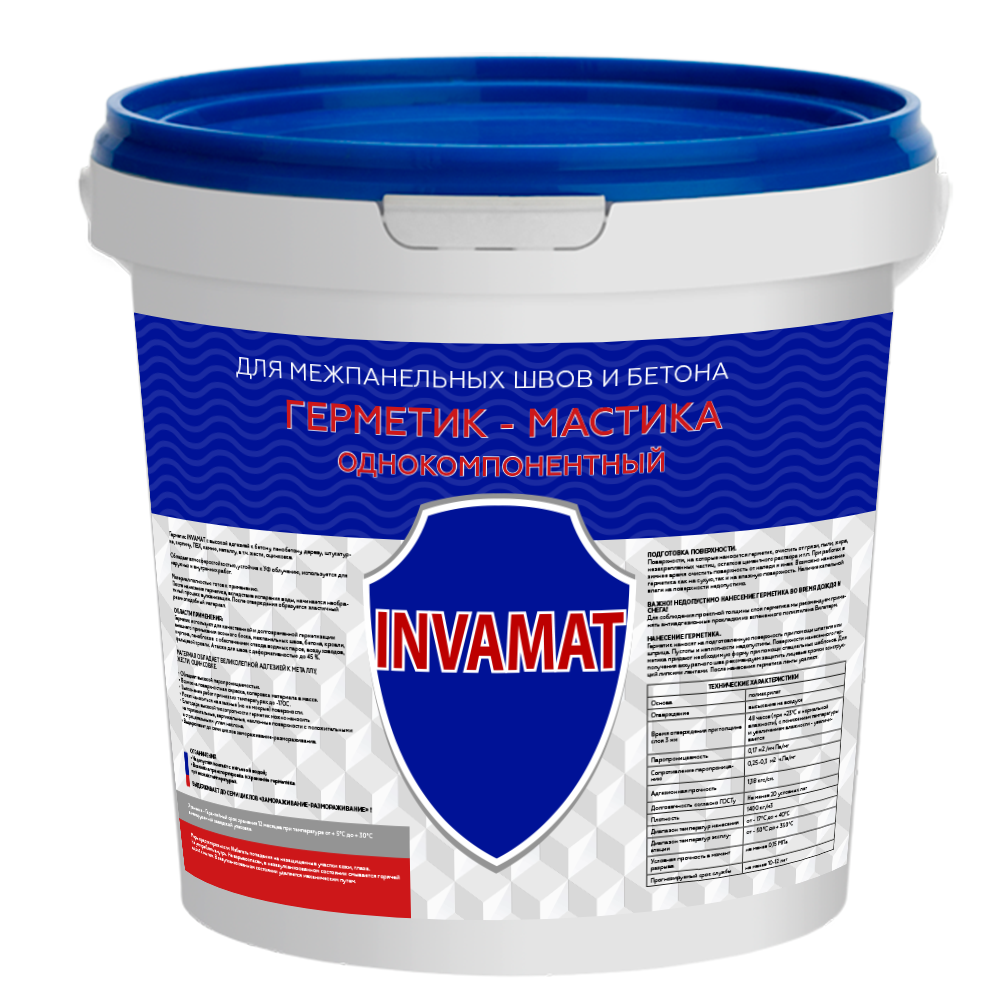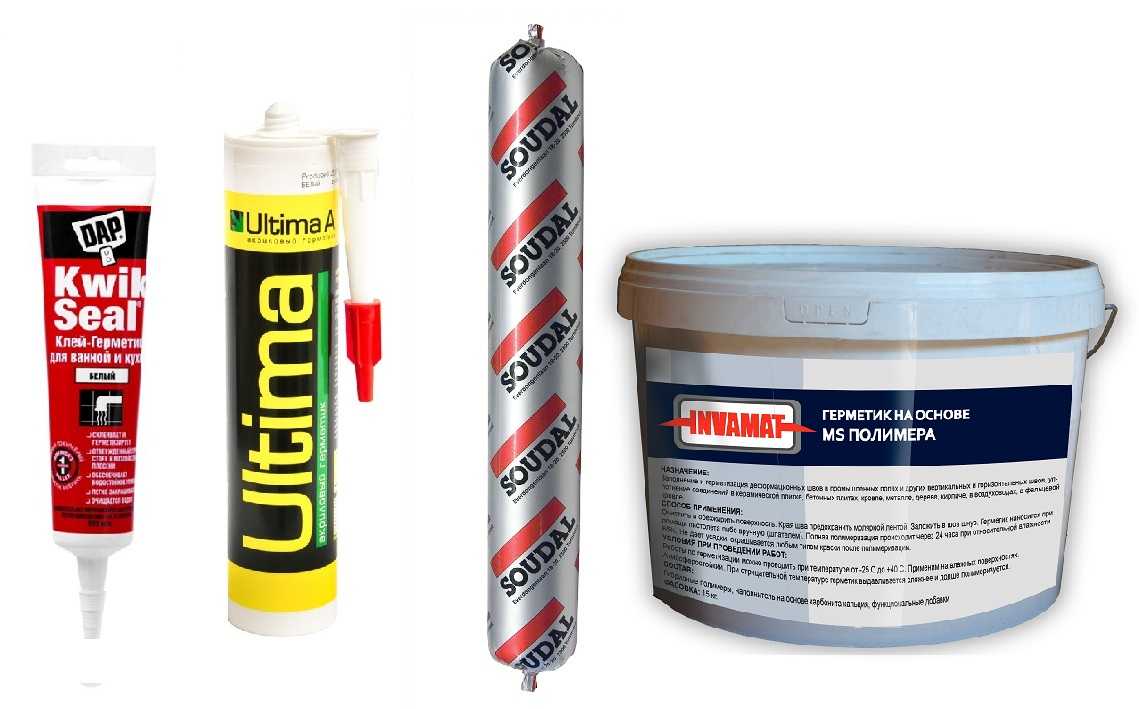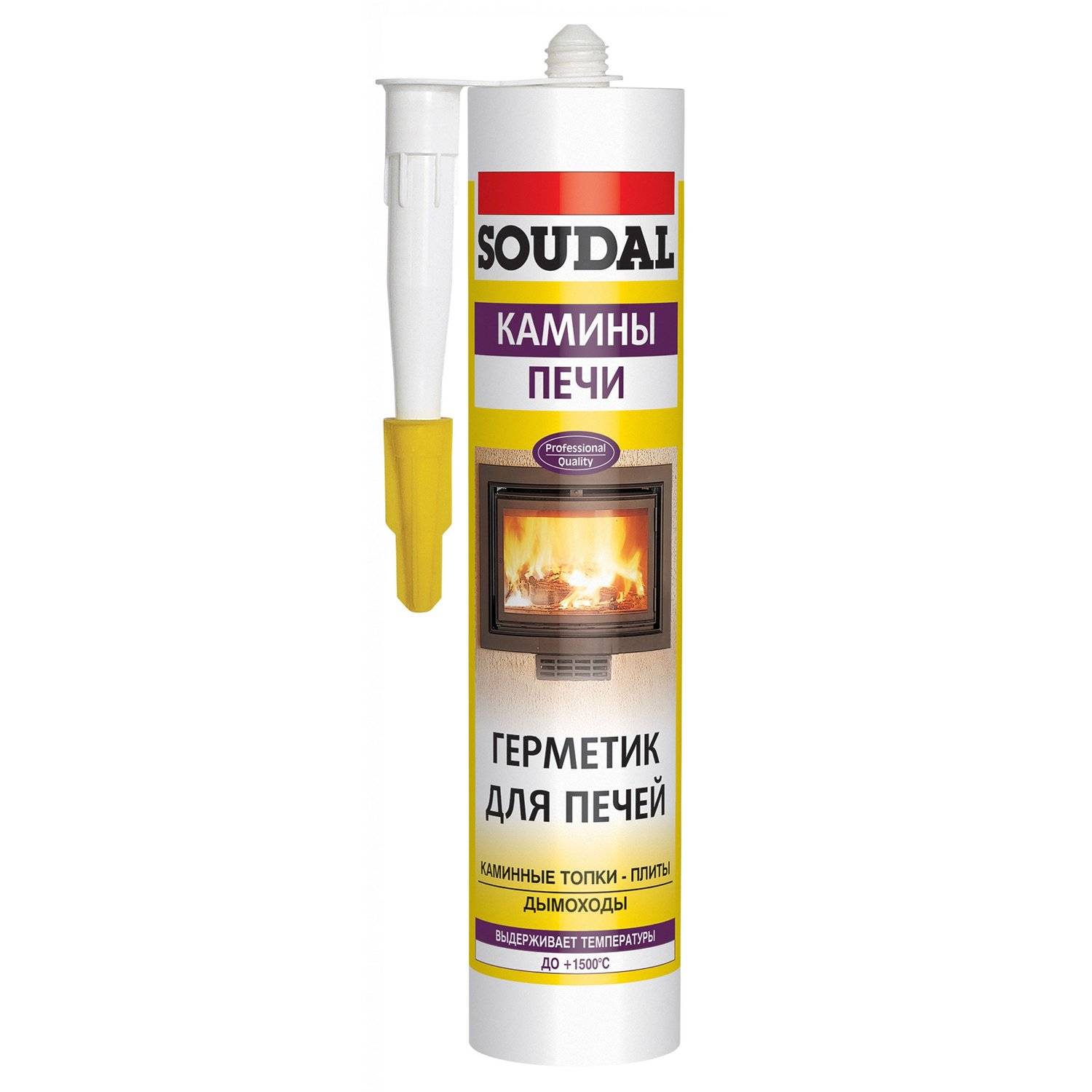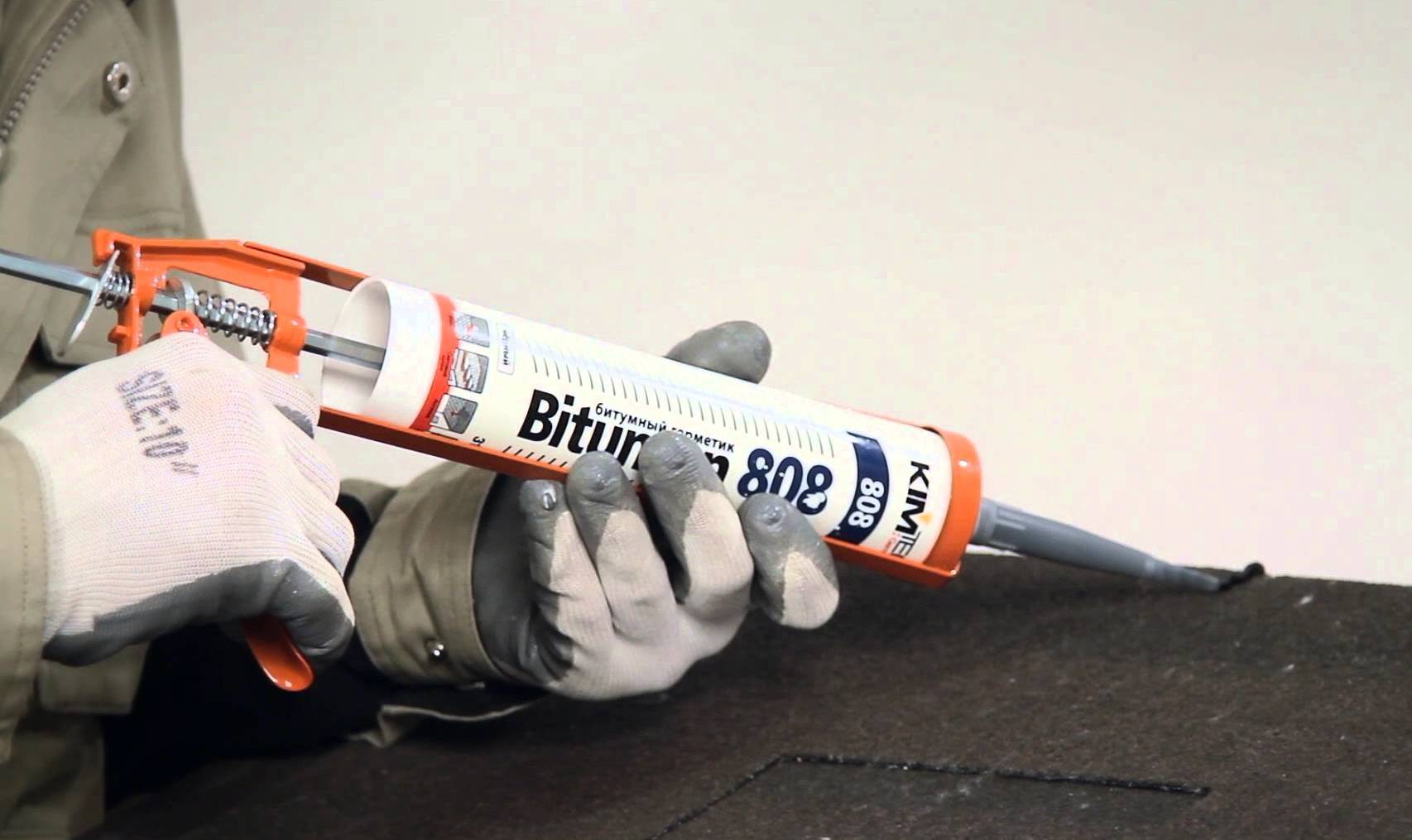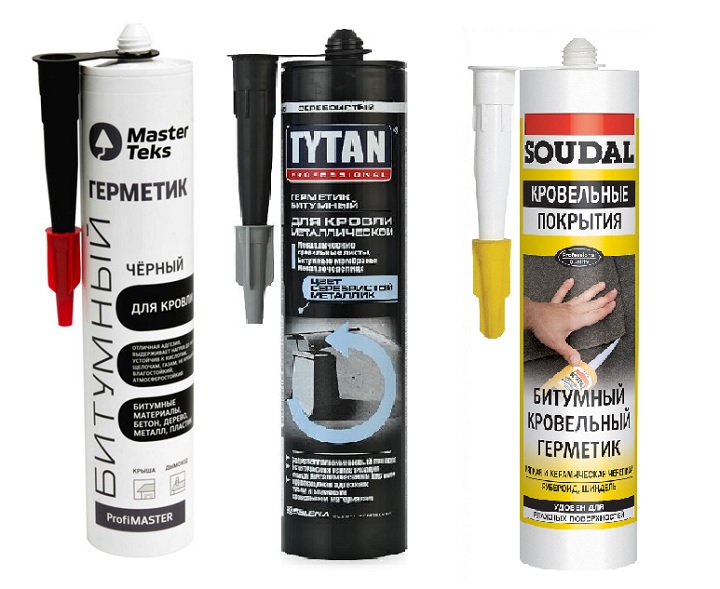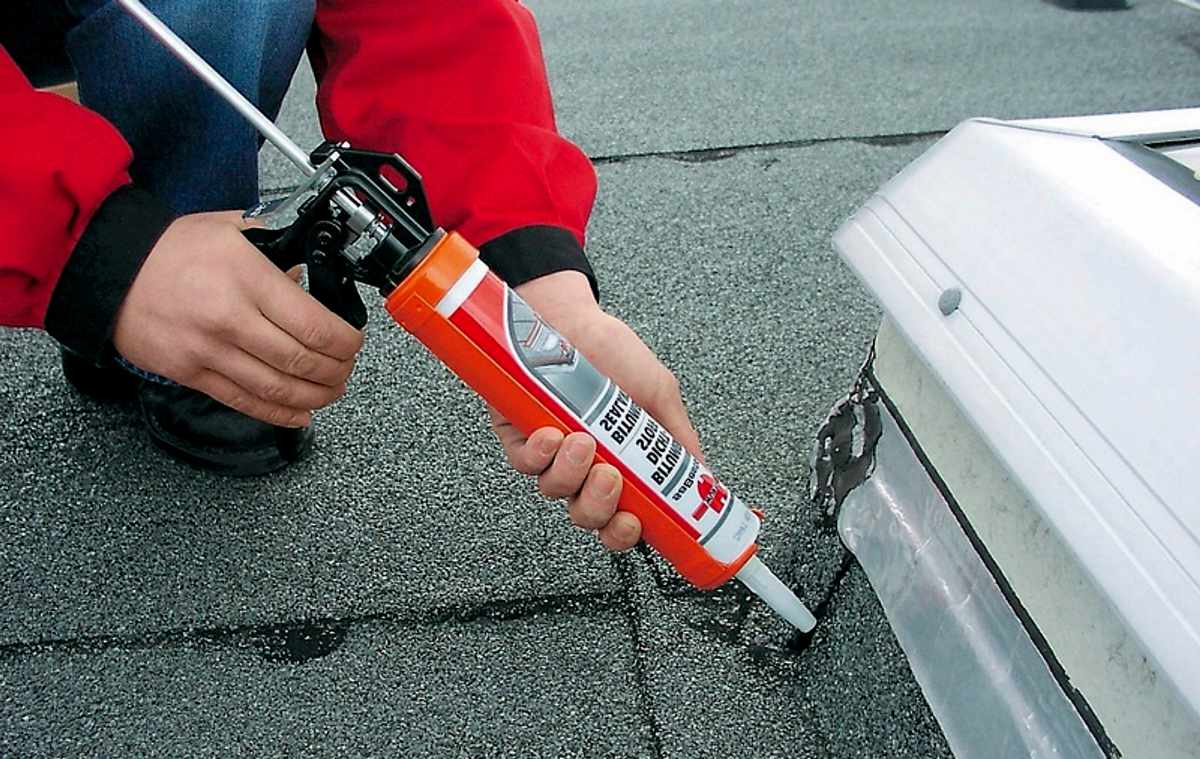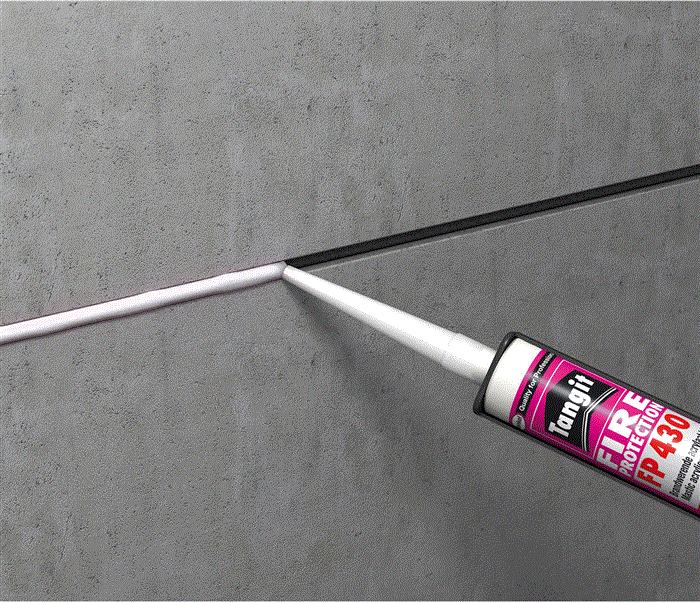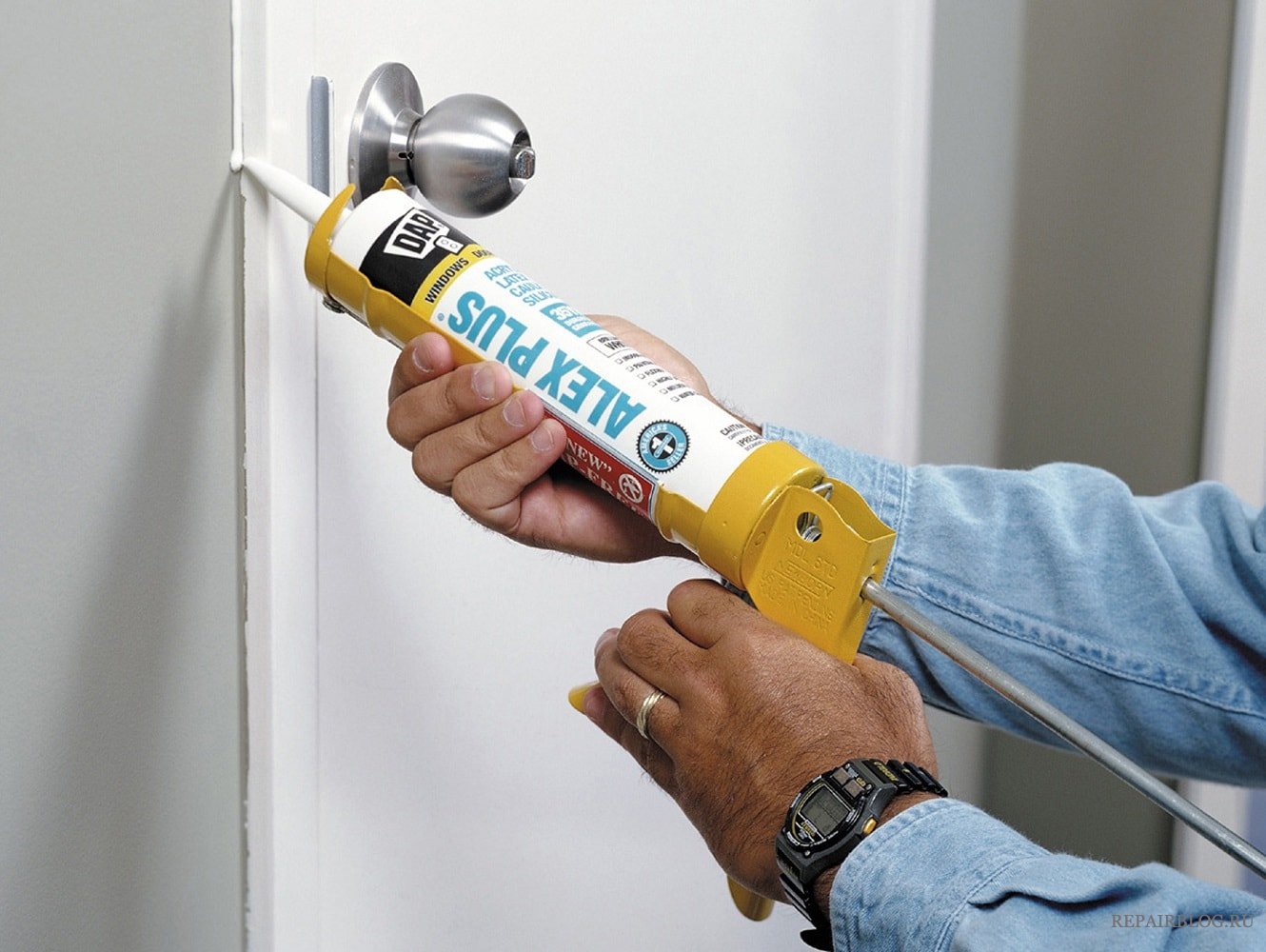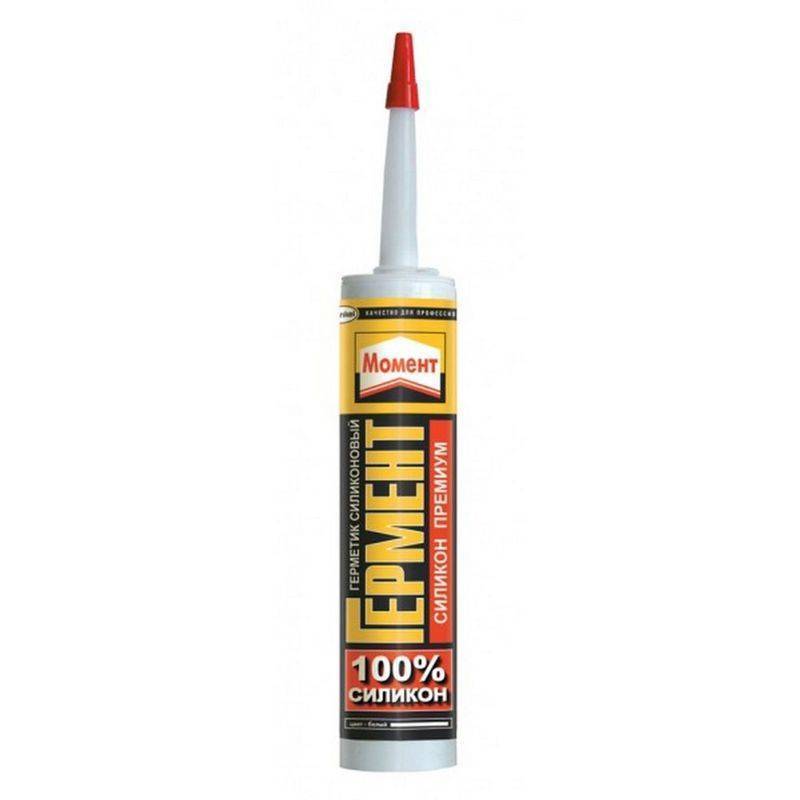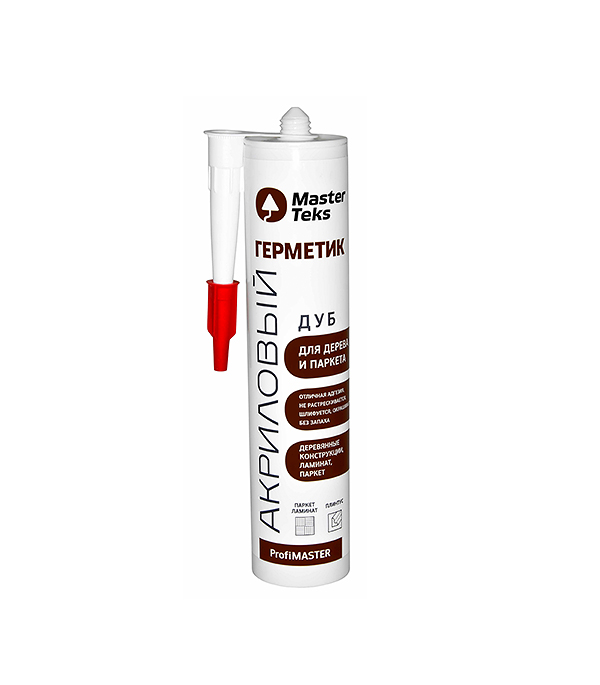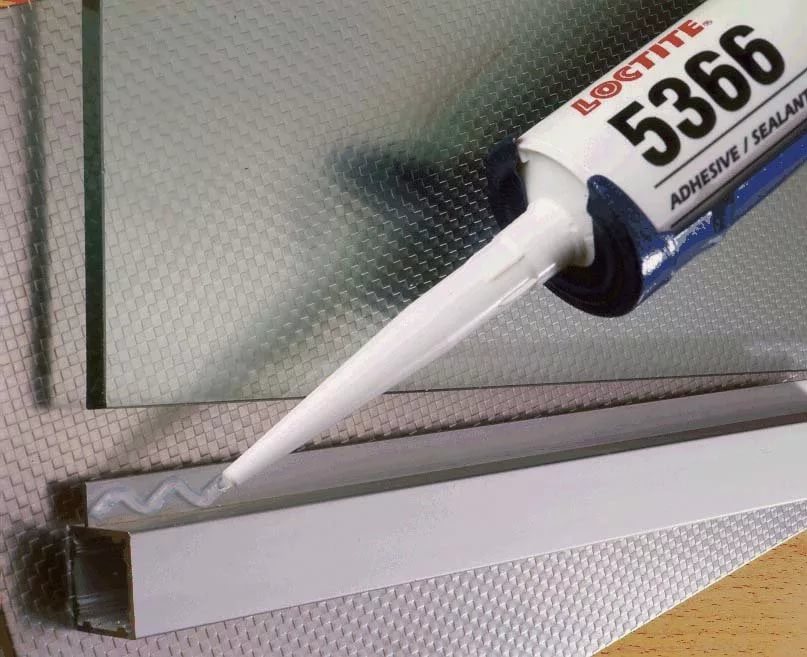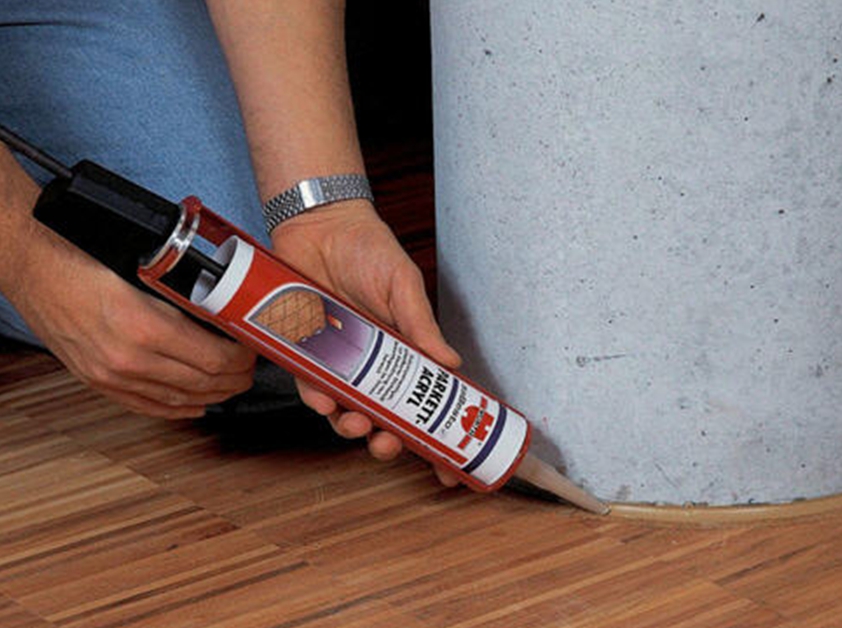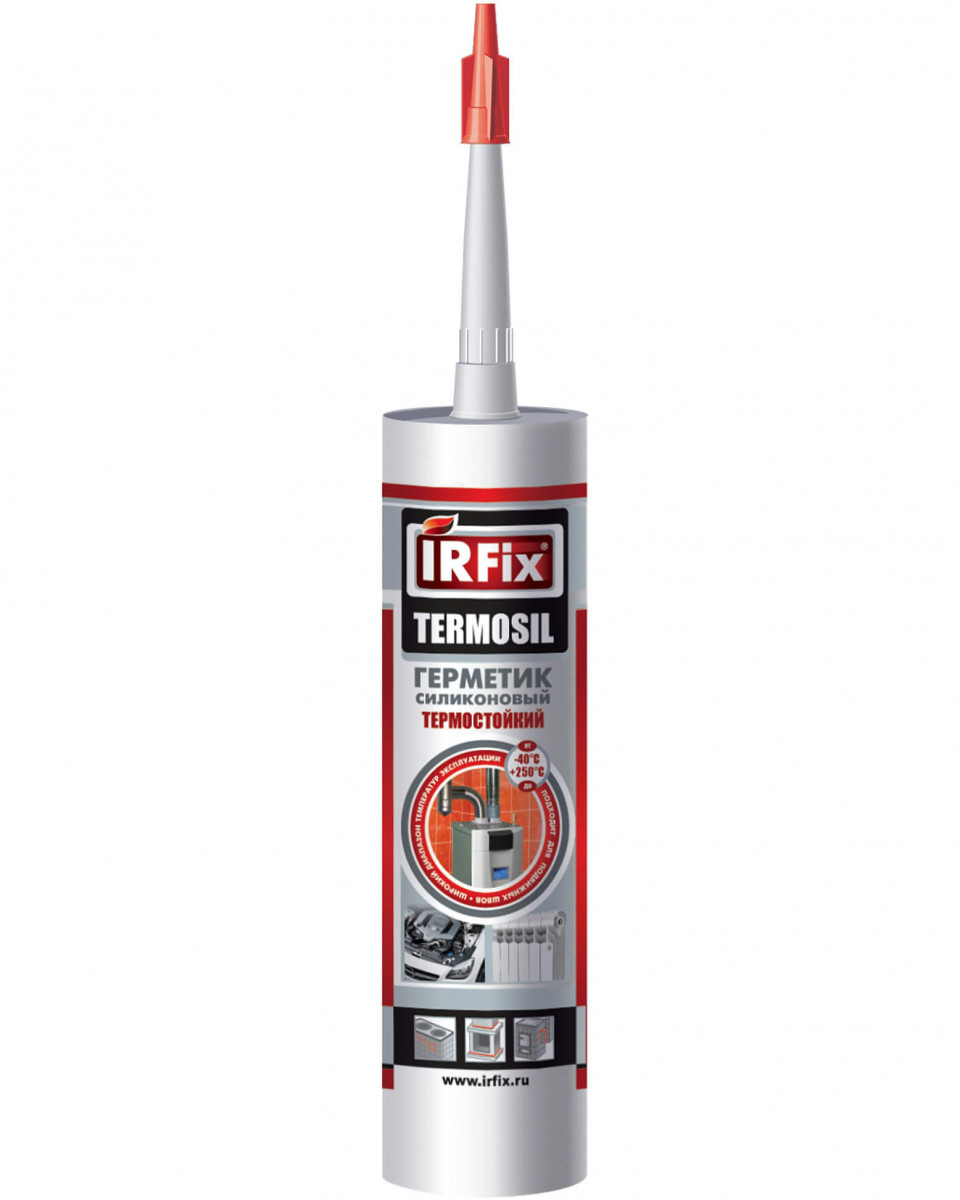Varieties of silicone-based sealants
All silicone sealants fall into several categories. Let's list them.
By composition
- One-component. These are completely ready-to-use formulations that harden after application. For the time indicated on the package, such a sealant hardens, being applied with a layer of up to 12-15 mm. When applying a thicker layer, the setting time will increase.
- Two-component. They consist of a silicone base and a hardener. The components are mixed before use. Composition of any thickness freezes.
Depending on the basis
One-component sealants are divided into 2 main groups:
- Acidic. They differ in low cost and availability. When such compositions are applied to any surface, a pungent vinegar smell is felt. This is a sign of an acidic sealant. When interacting with non-ferrous metals, acidic compounds provoke corrosion. Also interacts poorly with marble and cementitious materials containing alkalis.
- Neutral. These are more expensive, but also better quality sealants. They are inert to all known building materials and metals.
By color
The outdoor sealant can be produced in several colors:
- Colorless. It is a versatile color that can be used on any occasion.
- White. This color is chosen for sealing balconies when installing plastic window systems.
- Black. A sealant of this color is used in cars.
- Color. Dyes added to silicone can give it almost any shade. This is very convenient when working with different building materials. For example, it is easy to choose a color for sealing gaps in wooden doors.
By appointment
It is necessary to choose a sealant depending on its area of application:
- Low modulus. It is used for installation work outside buildings. Interpanel seams are filled with them. Differs in resistance to deforming loads, as well as a high degree of strength.
- Sanitary. It is characterized by high moisture resistance and resistance to mold and mildew formation.
- Universal. Suitable for all types of work, both outdoor and indoor.
- Automotive. The additives added to it allow the sealant to successfully withstand the effects of engine oil, coolant and brake fluid, and water. But his contact with gasoline should be avoided, since gasoline is able to dissolve silicone compounds.
- Electrical insulating. It contains components due to which the applied mass has dielectric properties.
As you can see, there is a choice of silicone sealant for all types of outdoor work. The most important thing is to take into account the type of work and the features of a particular type of sealant.
Silicone
Quite a popular type of sealing compounds. In composition, they can be acidic and neutral. Acidic ones are easier to manufacture, they are cheaper, but it is difficult to work with them indoors - they have a strong smell before they harden. The second negative point of acidic ones is that when applied to a metal, it quickly oxidizes. Therefore, it is not worth using it to seal steel and cast iron baths. Neutral silicone sealants do not react with materials, therefore their field of application is wider. But the production technology is more complicated and they cost more.
Bathroom silicone sealant is a good solution
Both acidic and neutral silicone sealants may or may not be waterproof. Only waterproof ones are suitable for baths. They also come in one-component and two-component.For private use, one-component is mainly used, since they do not need to be mixed before use.
Properties and scope
Properties and applications of silicone sealants:
- They have good adhesive properties. They can be used to seal the joints of stone and plastic window sills, when installing sinks and other appliances in the countertop.
-
It is used for sealing glass joints, non-porous building materials (metal, plastic, glass, wood, ceramics), adjoining drywall to the ceiling, drain pipes.
- They are characterized by increased tolerance to high temperatures, and can be used to seal joints around chimneys.
- Resistant to water, can be used to seal the junction of bathrooms and showers, sinks and other plumbing fixtures.
The main advantage of silicone sealants is that after polymerization, the seam remains sufficiently elastic. It does not crack and can be used to seal the junction of an acrylic or steel bathtub with a wall. The disadvantage is the susceptibility to the appearance and reproduction of the fungus. It is solved by adding antiseptic additives. To prevent the development of mold and mildew, it is best to use a silicone sealant for the aquarium or special plumbing. Both of these types have antibacterial properties.
Brands and prices
Silicone bath sealant is popular today and there is a pretty decent assortment in any store.
| Name | Colour | Special properties | Surface film formation | Release form and volume | Price |
|---|---|---|---|---|---|
| BAU MASTER UNIVERSAL | White | acid | 15-25 minutes | Tube for pistol (290 ml) | 105 rbl |
| Bison Silicone Versatile | white, colorless | acidic, resistant even to seawater | 15 minutes | Tube for pistol (290 ml) | 205 rbl |
| KIM TEC Silicon 101E | white, transparent, black, gray | acidic, contains antibacterial additives | 25 minutes | Tube for pistol (310 ml) | 130-160 rub |
| Somafix universal silicone | white, colorless, black, brown, metallic | acid | 25 minutes | Tube for pistol (310 ml) | 110-130 rub |
| Somafix construction | white, colorless | neutral, does not turn yellow | 25 minutes | Tube for pistol (310 ml) | 180 rbl |
| Soudal Silicone U universal | white, colorless, brown, black, | neutral | 7 minutes | Tube for pistol (300 ml) | 175 rbl |
| WORKMAN Silicone Universal | colorless | acid | 15 minutes | Tube for pistol (300 ml) | 250 rbl |
| RAVAK Professional | neutral, anti-fungal | 25 minutes | Tube for pistol (310 ml) | 635 rbl | |
| Ottoseal s100 sanitary | 16 colors | acid | 25 minutes | Tube for pistol (310 ml) | 530 rbl |
| Lugato Wie Gummi Bad-Silicon | 16 colors | neutral with bactericidal additives | 15 minutes | Tube for pistol (310 ml) | 650 rbl |
| Tytan silicone sanitary, UPG, Euro-Line | colorless, white | acidic with bactericidal additives | 15-25 minutes | Tube for pistol (310 ml) | 150-250 rub |
| Ceresit CS | colorless, white | acidic / neutral | 15-35 minutes | Tube for pistol (310 ml) | 150-190 rub |
As you can see, there is a very wide variation in prices. Expensive sealants (Ravak, Ottoseal. Lugato) - made in Germany, Denmark, Czech Republic. According to reviews, they are of excellent quality - they have been used for several years without changes, the fungus does not multiply on them. They are presented in the widest range of colors.
Inexpensive Ceresit, Tytan, Soudal serve well. These manufacturers have a wide range of both acidic and neutral silicone sealants. There are also other types (acrylic, polyurethane). There are also good reviews on them for use as a sealant for a bathroom - a joint with a wall.
Why is silicone as a filler good?
Let's list the advantages of a silicone rubber-based sealant:
Excellent adhesion to almost all building materials.
Moisture resistance, which is very important to resist atmospheric influences.
Strength. The polymers that make up the sealant are made from silicon, which has a high degree of hardness.
Elasticity
Due to its elastic structure, which is formed after the sealant hardens, the composition does not form cracks, does not shrink, does not expand. Seams and crevices filled with a sealant, even with temperature or temporary changes in size, remain unchanged. Silicone is held securely inside the deformable material.
A separate type of sealant has increased heat resistance, so it can be used to treat potentially hot surfaces.
UV resistance.
Silicone prevents bacteria and mold from growing.
Maintaining its basic properties for decades.
Metal roof sealing
Immediately I would like to note that we refer to a metal roof. These are: a seam roof, corrugated board and metal tiles. Seams and fastening points of the seam roof are sealed with bituminous or polyurethane compounds. Silicone in this case is strictly prohibited. The thing is that it can cause rust to appear on the surface of the fold.
The work is carried out step by step. To begin with, the surface to be treated is cleaned of dirt and rust. After which it is defatted with alcohol or solvent. It remains to wait until it dries and apply the mixture to the seam of the fold.
Note! In this form, the use of a sealant is not always convenient. Sometimes you will need to make sure that the paste adheres to the surface rather than forming a raised seam.

If we talk about a roof made of corrugated board, then experts recommend using self-adhesive tapes, on which a sealing compound is applied. It is enough to remove the protective film on one side and press the tape with this side to the joint of the sheet, which has been previously cleaned, degreased and dried. If necessary, the edge is rolled with a roller. And if the surface is complex, then special ribbons with a corrugated surface are used.
Sealing gaps
How to properly use a sealant to seal cracks in plastic windows? The instruction is given taking into account the fact that the slopes have already been installed. You should first prepare the following tools: a special syringe for the material, water in a container, construction tape. Next, we carry out work according to the following scheme:
- We start by preparing the surface of the slopes. In order to prevent excess substance from staining the surface of the slopes and can be easily removed, we place construction tape. Its use will greatly facilitate the work and save time.
- We clean the slots that are closed from all sorts of dirt, dust, remnants of a protective film. This process will significantly improve adhesion.
- Next, we carry out the seal with a syringe. We gradually squeeze the material out of the syringe into the space between the window frame and the PVC slope. The syringe should be held at an acute angle and held so that its nose smoothes the squeezed out substance behind it.
- Smooth the unevenness of the resulting seam with a finger moistened with water until we achieve the desired effect. You can also remove the excess. Be sure to control the uniform distribution of the material, exclude gaps in the application. The finger can be cleaned with a tissue.
- Now we proceed to the final cleaning of the surface from the remnants of the substance. This should be done with a damp sponge. We carry out the procedure very carefully so that the window sealant at the seams retains its integrity. We wash the sponge itself thoroughly.
- It is best to sew up the seams in stages. For example, first we apply sealant to one part of the window frame, level it, remove the excess and wash it. Only then should you proceed to the next part. Such a pace of work will eliminate the preliminary solidification of the material, if all of a sudden it does not work out all at once. It is difficult to level the hardened material.
- We carry out high-quality cleaning. Otherwise, pieces of solidified material will spoil the appearance of the slopes or window frames. Even if they are not very noticeable right away, they will darken over time and look like dirty spots.
Sealing a plastic window with your own hands
Processing the window opening of the sealant is the final stage of installing a glass unit. Sealing is carried out when all installation work has already been completed, and consists of several stages:
- Installation of a double-glazed window.First, the abutment seam, which is the gap between the frame and the opening, is filled with polyurethane foam. You need to wait until it dries completely, so that it fills in all the small irregularities and holes.
- Finishing. Then you need to cut off the protruding part of the foam and treat the seam outside with cement mortar.
- Sealing. The assembly sealant is applied externally only. You need to apply it around the entire perimeter of the seam and wait until it dries completely.
Related article: Replacing windows is a maintenance or overhaul
Competent sealing of a plastic window with your own hands begins with the removal of excess polyurethane foam. If this is not done, the seams will look uneven and the sealing will not be very good. Plastering is also mandatory. The solution is applied to the joint. This will provide additional protection for the polyurethane foam. For additional insulation, it is better to lay a polyurethane sealing tape around the outer perimeter before applying the sealant. If there is a large gap between the frame and the opening, you can run the tape directly against the wall.

Rice. 2. Sealing window seams
MS polymer sealants
A newly emerged type of sealant that is rapidly gaining popularity due to its excellent properties. They combine the qualities of silicones and polyurethanes, reliably protecting against leakage, forming elastic and reliable connections.
VS polymers - excellent qualities for bathrooms and other wet areas
Properties and scope
The main advantage of sealants based on MS polymers is that in addition to the properties of the sealant, they still have a high adhesive ability, therefore, their polymers are also called adhesive sealant. They have the following properties:
- Excellent adhesion to all building materials without the need for primers.
- Solvent free, safe and virtually odorless.
- They dry quickly and harden even at sub-zero temperatures (only slower).
- When dry they do not harden, they remain elastic (elasticity range 25%).
- After drying, you can paint.
- They do not crack or change color under the influence of the sun.
- Waterproof, can be used in fresh and salt water.
-
When applied, they do not spread, a neat seam is easily formed on vertical and horizontal, inclined surfaces.
Excellent properties. There are also disadvantages. The first is a high price, but it is justified, since the seam does not crack and does not leak for a long time. The second - after a while, the surface of the white sealant may turn yellow. This does not affect the quality of the seam, but it looks ugly. You can remove yellowness by wiping the seam with refined gasoline. The third minus - after hardening, the composition is removed only mechanically. No solvents act on it.
Manufacturers and prices
Almost every major manufacturer has MS sealants, and they also have various additives that give special characteristics, so that you can choose exactly according to the situation and for a specific type of work.
| Name | Colour | Special properties | Skin formation | Release form | Price |
|---|---|---|---|---|---|
| Bisin MS Polymer (adhesive sealant) | white / transparent | Glass, mirrors, plastics, bricks, natural stone, concrete, wood, iron and many other metals. | 15 min at + 20 ° C | Tube for pistol (280 ml) | 490-600 rub |
| BOSTIK MS 2750 | White black | Metal, wood, glass, expanded polystyrene, etc. | 30 min at + 20 ° C | Tube for pistol (280 ml) | 400-450 rub |
| BOSTIK SuperFix | White gray | Suitable for underwater, swimming pools and rooms with high humidity | about 15 minutes | Tube for pistol (280 ml) | 400-550 rub |
| TECFIX MS 441 | transparent | Resistant to seawater, chlorine, mold and fungi | 10 min at + 23 ° C | Aluminum film sleeve (400 ml) | 670-980 rub |
| 1000 USOS | white, transparent, gray, blue, green, tiles, black, brown | For bathrooms and kitchens with anti-mold action | 15 min at + 20 ° C | Tube for pistol (280 ml) | 340 rbl |
| SOUDALSEAL High Tack | White black | For sanitary rooms and kitchens - resists the formation of fungus |
10 min at + 20 ° C | Tube for pistol (280 ml) | 400 rbl |
| SOUDASEAL 240 FC | White, black, gray, brown | For sanitary rooms and kitchens, fast curing | 10 min at + 20 ° C | Tube for pistol (280 ml) | 370 rbl |
| SOUDASEAL FIX ALL High Tack | White black | For sanitary facilities, super strong initial hold | 10 min at + 20 ° C | Tube for pistol (280 ml) | 460 rbl |
Despite the fact that this type of sealant has appeared recently, the range is solid, since the combination of high adhesive ability and sealant properties is very convenient and the product is in demand.
The main advantage of MC sealants is elasticity after drying, tolerance of prolonged direct contact with water, and resistance to the growth of fungi and bacteria. Therefore, this type of sealant is used to seal the junction of a bathroom or shower stall with a wall. In the case of a shower cabin, it is also good because it does not slip when applied vertically.
Another positive point - most of the compositions have a pasty consistency, which lays down evenly, does not bubble. After application to the initial curing (skin formation), the applied sealant can be easily smoothed into the desired shape.
Types and benefits
Today, you can find a variety of compositions on sale, and each of them has both advantages and disadvantages. Immediately, we note that the price segment of these products is very wide, so you can easily find a product at an affordable cost.
There are 5 main types of frost-resistant sealants that deserve attention. We will consider them further.
Silicone
One of the most common remedies. It is considered versatile and excellent for outdoor work when you need to seal the joints.
Silicone sealants allow you to create an elastic joint that has:
- wide range of operating temperatures;
- resistance to moisture, water and dampness;
- excellent adhesion (except for porous materials, including plaster and concrete).
Some sealants of this type have an unpleasant sour odor, which is produced by the release of acetic acid vapors during curing. However, neutral compounds can also be found on the market.
Acrylic
These compositions are considered the most environmentally friendly, since they do not contain harmful substances. Due to this, they are suitable for sealing private buildings. In addition, they are known for good vapor permeability, which makes them different from other products.
Acrylic compounds are suitable for the treatment of wooden structures. With their help, you can seal the joints between a bar or a log, providing excellent insulation from negative environmental factors. Other advantages of acrylic sealants include:
- ease of use;
- versatility, because due to their high adhesion, these compounds adhere well to both smooth and porous surfaces, including stone, metal, concrete, glass and others;
- resistance to UV radiation;
- the possibility of partial or complete restoration of the seam;
- fire safety.
These compounds are cheap and readily available. When buying, it is recommended to read the instructions on the packaging and make sure that the sealant is frost-resistant (there must be a corresponding mark).
Polyurethane
Despite the fact that this type has appeared on the market not so long ago, its popularity is growing rapidly. In addition to good water resistance and high resilience, these sealants are known for excellent frost resistance. They can withstand temperatures down to -60 degrees Celsius and keep the seam as tight and undamaged as possible.
Products of this type are characterized by slight shrinkage after polymerization. They are resistant to direct sunlight. Their curing occurs upon contact with atmospheric moisture.If we are talking about two-component sealants, then polymerization proceeds by mixing the substances that make up the composition.
The service life of polyurethane products is also curious. It reaches 20 years, and the seam does not require renewal (except for mechanical or any other damage). As for the field of application, these compositions are suitable for sealing:
- foundation;
- roofing;
- interpanel seams;
- window and doorways.
Rubber
These sealants are known for their unusual formulations, which, in addition to elastomers and oligomers, can include:
These compositions can withstand frosts down to -50 degrees Celsius and at the same time allow to protect materials from the formation of corrosive processes, thanks to which they have become very famous in the professional field. They are not afraid of either water or ultraviolet radiation, and after polymerization, the sealing seam can be coated with paint. This type of sealant is applied even to a damp surface without fear of loss of adhesion.
Bituminous
Bituminous sealant is intended mainly for roofing work. It allows you to eliminate damage to both roll materials and corrugated board, while preventing moisture from entering the under-roof space.
Of the advantages of these compositions, one can single out:
- ease of application;
- good adhesion to metal surfaces;
- no need for preliminary preparation;
- fast curing.
Types of joint sealants
Any joint sealant for a car has a reliable composition, otherwise it will not be able to provide the proper level of sealing of the joints. And yet, the materials are not the same in terms of the base, therefore they differ in properties and characteristics.
Acrylic based mixtures
Acrylic sealants are prepared on the basis of polymer compositions. They have good adhesion to the surface, but with strong vibration or shock loads, they can peel off due to the medium elasticity. It is best to use such products for porous materials and stable knots, seams. Any acrylic sealant can be painted, varnished.

Anaerobic sealants
These products are easy to distinguish from the rest: they have a liquid texture, which is why they got the name "liquid pad". The sealant is distributed inside cavities and the smallest cracks, and hardens only after contact with oxygen stops. Usually, anaerobic compounds are used to repair small areas, otherwise there is a risk of insufficiently strong seams. Most often, the compositions are used by professionals, because they must be applied correctly and strictly follow the instructions.
Silicone sealants
They are considered the best option for home repair of metal products. Such sealants are easy to apply, harden quickly, retain their strength and elasticity for a long time. Silicone is impervious to moisture even at elevated pressure, not afraid of temperature extremes. With significant air humidity, it hardens very quickly - in 10-15 minutes. Usually the products are applied from a tube with a long nozzle. They can fill irregularities up to 6 mm deep.
Polyurethane compounds
These sealants are the most popular on the market, available in a huge range. They are sprayed, pasty for brush application. Distinctive features of polyurethane sealants are:
- ease of use;
- no spreading from vertical bases;
- high flexibility, elasticity, heat resistance, moisture resistance;
- withstanding high mechanical loads.

Bituminous mixtures
Presented in the form of compositions based on bitumen with the addition of modifiers, fillers, adhesion accelerators. It looks like a dark paste. They do not require careful preparation of the surface, they are suitable for most materials, including any metals. They can be used in humid environments and are well tolerated in direct contact with water.

